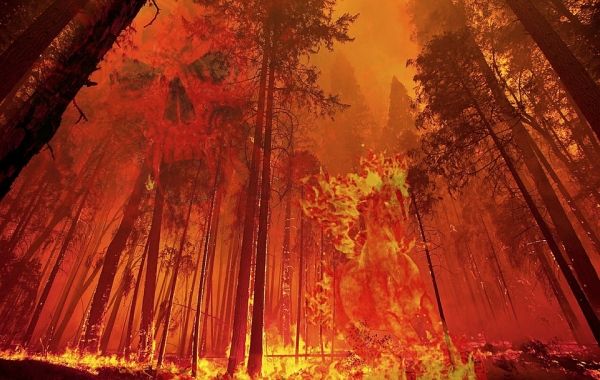In recent years, wildfires on the West Coast have become larger and more damaging. A combination of almost a century of fire suppression and hotter and drier conditions has created a tinderbox ready to ignite, destroying homes and polluting the air over large areas.
New research led by the University of Washington and the University of California, Santa Barbara, looks at the longer-term future of wildfires under scenarios of increased temperature and drought, using a model that focuses on the eastern California forests of the Sierra Nevada. The study, published July 26 in the journal Ecosphere, finds that there will be an initial roughly decade-long burst of wildfire activity, followed by recurring fires of decreasing area.
“That first burst of wildfire is consistent with what we’re seeing right now in the West. The buildup of fuels, in conjunction with the increasingly hot and dry conditions, leads to these very large, catastrophic fire events,” said lead author Maureen Kennedy, assistant professor at the University of Washington Tacoma. “But our simulations show that if you allow fire to continue in an area, then the fire could become self-limiting, where each subsequent fire is smaller than the previous one.”
How climate change, tree growth and wildfires will interact over coming decades is only beginning to be explored, Kennedy said, through experiments and simulations. Existing models of vegetation often assume wildfires will strike at set intervals, like every 10 years, or based on past patterns of wildfire risk for that ecosystem. But those previous patterns may not be the best guide to the future.
Read more at University of Washington
Photo Credit: ParallelVision via Pixabay


